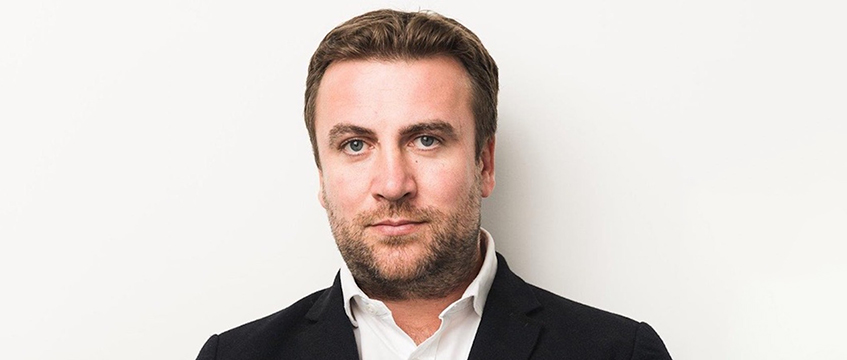Regenerating Leeds: hope and heritage
In the middle of Wellington Place, MEPC’s 21-acre office development in Leeds city centre, is a 170-year-old lifting tower, one of a pair that once stood either side of the city’s river and canal viaduct. Now a landmark in Tower Square, the Grade II listed building sits among shiny new office blocks with tenants including Arup , Sky Betting & Gaming and law firm Shulmans.
For Paul Pavia, development director at MEPC, the tower has become a focal point for the entire scheme – and a link between an exciting future for the city and a past it should be proud of.
“It’s one of the things that people, when they come to Wellington Place, notice more than everything else we’ve built here, despite the fact it’s the smaller structure,” Pravia said in a video interview as part of EG’s recent Cities Live event in Leeds. “That connection with heritage, that ability for people to connect in this space, that’s what placemaking is about. It’s not about building things, actually. That’s incidental, that maybe is an activator. But you have to work really hard on all those other elements that are really about the human condition of connection.”
In the middle of Wellington Place, MEPC’s 21-acre office development in Leeds city centre, is a 170-year-old lifting tower, one of a pair that once stood either side of the city’s river and canal viaduct. Now a landmark in Tower Square, the Grade II listed building sits among shiny new office blocks with tenants including Arup, Sky Betting & Gaming and law firm Shulmans.
For Paul Pavia, development director at MEPC, the tower has become a focal point for the entire scheme – and a link between an exciting future for the city and a past it should be proud of.
“It’s one of the things that people, when they come to Wellington Place, notice more than everything else we’ve built here, despite the fact it’s the smaller structure,” Pravia said in a video interview as part of EG’s recent Cities Live event in Leeds. “That connection with heritage, that ability for people to connect in this space, that’s what placemaking is about. It’s not about building things, actually. That’s incidental, that maybe is an activator. But you have to work really hard on all those other elements that are really about the human condition of connection.”
EG’s panellists at the event echoed Pavia’s sentiment on the importance for Leeds’ real estate industry of creating something new while revering the old – particularly important in a city that has more listed buildings than anywhere else in the country outside of the capital. As the panel discussed the future of the Northern Powerhouse and the outlook for levelling up in an increasingly uncertain economic climate, the need for regeneration with respect was front of mind.
Reinvention, not replacement
Angela Barnicle spent more than a decade as a director at Deloitte, advising local authorities across the country on city centre developments. Now, as Leeds City Council’s chief officer for asset management and regeneration, she is even closer to the coalface.
“Leeds has been really good at reinvention and reimagining itself instead of just replacing itself year after year,” Barnicle said. “The accolade that Leeds has more listed buildings than anywhere outside of London is a huge privilege and we respect that custodianship that we have.”
It’s that respect, that responsibility, that gives the city and the wider region its “unique character”, Barnicle added.
“If you think about Victoria Quarter [shopping centre, pictured] or [architect Cuthbert] Broderick’s buildings or the beautiful Gilbert Scott building [home to Leeds General Infirmary], it has been really important to us as we look towards the future that we don’t lose our uniqueness, that Leeds feels different but very welcoming.”
That goes for nearby towns and cities too, added Nasreen Karim, Bradford-based founder and director of Platinum Partnership Solicitors and BAME business committee chair at West & North Yorkshire Chamber of Commerce. In fact, she argued, the need for reinvention is arguably even greater in other locations.
“Sometimes, when we talk about the Northern Powerhouse or the Leeds City Region, Bradford is forgotten,” Karim said. “We can’t forget that Bradford has one of the biggest local authorities in the UK and contributes a massive amount to the economy.
“I feel as though Bradford is maybe 20 or 30 years behind Leeds. I think when the textile trade disappeared, it wasn’t reinvented. But over the past year or so, and especially with winning the City of Culture [2025] bid, there is a massive interest in Bradford. There is work being done in the city centre – we have City Village, we have plans to transform Odsal Stadium, we have Darley Street Market. There is a lot happening in Bradford to reinvigorate the economy.”
A downturn like no other
Throughout the recent months of political turmoil, the notion of levelling up appears to have fallen in and out of favour as the individuals tasked with leading it have changed.
Matt Lonergan, a partner at Shoosmiths, is sceptical. “My concern is that levelling up has become a bit of a political byword that doesn’t really involve a great deal anymore,” he said.
“You’ve got to put your money where your mouth is. Infrastructure is still woefully lacking in the north of England. In the south of England, in London, £419 per head more is spent on transport infrastructure than in the north of England. We may never be on level terms, but we’ve got to put more in to get more out, particularly when you’re looking to attract new sectors, new businesses to an area.”
Regional cities have much in their favour. Clare Bailey, director in the commercial research team at Savills, said cities such as Leeds and Bradford are in a “really strong position”, even as the country prepares to enter a recession that some commentators believe could last for a year.
“It’s the first time in any downturn that cities are likely to see rental growth on top space,” Bailey said. “But, for me, it’s not all about just looking at grade-A, top space. It’s about thinking about those companies coming through, those start-ups, those entrepreneurs. It’s looking at the talent from the universities and it’s thinking about space for them as well.”
Real estate as an industry can think more creatively about such space, Bailey added. Could vacant buildings not be repurposed as affordable workspace or community space? “Universities are fabulous within Leeds, and almost 20% of those who graduated last year went into the tech and science industries and stayed within the city,” she said. “We have to make sure that we’ve got the right kind of product to facilitate these.”
Creating a legacy
Earlier this year, the council launched a consultation on what it calls an “innovation arc”, stretching from the north of the city around the university campuses and hospital, through the city centre towards Park Square, Wellington Place, the River Aire and the canal. The council believes it can ultimately develop a series of “innovation neighbourhoods” that will also include 3,000 new homes.
Tori Critchley, development director for innovation at Leeds Teaching Hospital NHS Trust, outlined for EG’s audience the two new teaching hospitals being planned that will help to generate a surplus estate of some 13 acres touted as an “innovation village” within the arc.
“Our initial work suggests it’s going to be about a million square feet, maybe more,” Critchley said. “The aspiration for that million square feet is going to be mixed-use. So that takes into account demand for housing, whether that’s build-to-rent or student, affordable or key-worker housing.
“As the NHS, we are the landowners – we are going to be there for a while, we are going to have our new hospital next to it and we want it to support the innovation aspirations for Leeds. And with partner organisations such as Leeds City Council, we really want this to be a legacy.”
There is respecting heritage, and then there is creating a legacy for future generations. The real estate industry in Leeds is proving itself adept at both.
The panel
Clare Bailey, director, commercial research, Savills
Angela Barnicle, chief officer, asset management and regeneration, Leeds City Council
Tori Critchley, development director, innovation, Leeds Teaching Hospitals NHS Trust
Nasreen Karim, director, West & North Yorkshire Chamber of Commerce
Matt Lonergan, partner, Shoosmiths
To send feedback, e-mail tim.burke@eg.co.uk or tweet @_tim_burke or @EGPropertyNews
Photo © Oliver Sherwin/Unsplash











